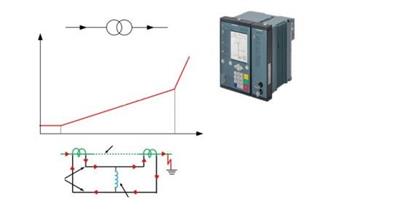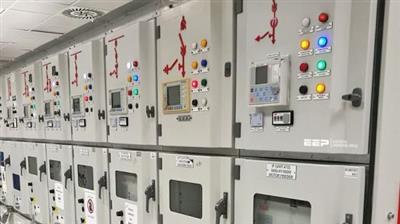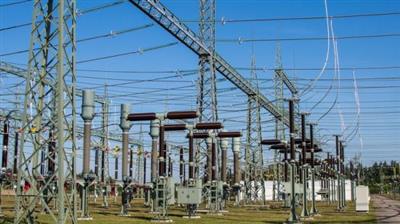Udemy - Relay Setting Coordination, Over Current Protection
"softddl.org"
3-10-2021, 18:01
-
Share on social networks:
-
Download for free: Udemy -
-

MP4 | Video: h264, 1280x720 | Audio: AAC, 44.1 KHz, 2 Ch
Genre: eLearning | Language: English + srt | Duration: 14 lectures (2h 3m) | Size: 846.9 MB
Basic Methodologies and philosphies

MP4 | Video: h264, 1280x720 | Audio: AAC, 44.1 KHz, 2 Ch
Genre: eLearning | Language: English + srt | Duration: 14 lectures (2h 3m) | Size: 846.9 MB
Basic Methodologies and philosphies
What you'll learn:
Basic Relay Settings coordination
Over Current Relays
Selectivity
Discremination
Requirements
Basic understanding of electrical engineering
Description
Relay co-ordination implies quality of selectivity among the protective devices, particularly in over-current protection devices. Over-current devices represent the largest installed base of protective equipment in any power system and may be considered the backbone of anyprotection strategy.
Over-currents in a power distribution system can occur as a result of both normal (motor starting, transformer inrush, etc.) and abnormal (ground fault, line-to-line fault, etc.) conditions. In either case, the basic purpose of current-sensing protective devices is to detect the abnormal over-current with proper coordination, to operate selectively and to protect equipment properly by minimizing the outage of the rest of the system.
Relay operating characteristics and their setting must be carefully selected in order to achieve selectivity. The aim is to switch off only the fault component and to leave the rest of the power system in service in order to minimize supply interruptions and to ensure stability. Protection should be as sensitive as possible to detect faults at the lowest possible current level of both phase and ground faults. However, it should remain stable under all permissible load,overload and through-fault conditions.
Primary Protection: The protective system, which is expected to operate in response to a fault in the protected zone.
Back- Up Protection: A protective system intended to supplement the main protection in case the latter should be ineffective, or to deal with faults in those parts of the power system that are not readily included in the operating zones of the main protection.
1.1 Data collection and mapping
To perform a coordination study, the following information is collected and modeled: a. A single-line diagram of the power system involved, showing the type and rating of the protective devices and their associated current transformers.
b. The impedance in ohms, percent or per unit of all power transformers, rotating machines and feeder circuits.
c. The starting current requirements of motors.
d. The grid short circuit MVA.
1.2 Overcurrent protection guidelines
Before proceeding with overcurrent coordination, the individual load or branch circuit protection should be applied in accordance with accepted guidelines recommended or mandated by the National Electrical Cod (NEC), American National Standards Institute (ANSI), Canadian Standards Association (CSA), Canadian Electrical Code (CEC), International Electro-technical Commission (IEC), and the Institute of Electronic and Electrical Engineers (IEEE), or a similar code or body, where applicable. The NEC is primarily a safety code; but does offer specific protection requirements for electrical equipment In coordinating system protection, the conductor should be able to withstand the maximum through-fault current for a time equivalent to the tripping time of the upstream protective device. Another factor in protecting the circuit cable is the maximum short-circuit current available at the extremity of the cable circuit. The conductor insulation should not be damaged by the high conductor temperature resulting from current flowing to a fault beyond the cable termination. As a guide in preventing insulation damage, curves of conductor size and short circuit current based on temperatures that damage insulation are available from cable manufacturers. In coordinating system protection, the cable should be able to withstand the maximum through short-circuit current for a time equivalent to the tripping time of the primary relay protection or total clearing time of the fuse. Many times this requirement determines the minimum conductor size applicable to a particular power system. If it is not possible to select a device that will protect the cable insulation, it is recommended that a conductor large enough to carry the current without insulation damage be used.
Thanks
Who this course is for
Technicians, Engineers, Students
Homepage
https://www.udemy.com/course/relay-setting-coordination-over-current-protection/Buy Premium From My Links To Get Resumable Support,Max Speed & Support Me
https://hot4share.com/qh28sjsvwae0/nl8rg.Relay.Setting.Coordination.Over.Current.Protection.rar.html

https://uploadgig.com/file/download/65E4e537e57B535F/nl8rg.Relay.Setting.Coordination.Over.Current.Protection.rar

https://rapidgator.net/file/a0ca6f78eb099de87f64965bc027d5b9/nl8rg.Relay.Setting.Coordination.Over.Current.Protection.rar.html
Links are Interchangeable - No Password - Single Extraction
The minimum comment length is 50 characters. comments are moderated




